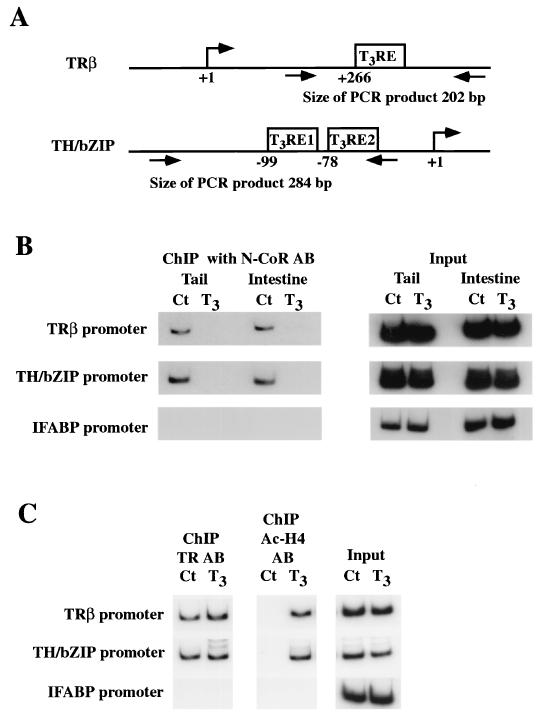FIG. 7.
ChIP assays show that T3 treatment leads to the release of xN-CoR from and increase of histone acetylation at T3 response gene promoters. (A) Schematic diagrams showing the regions that control T3-dependent transcription of the two T3-responsive genes TRβ and TH/bZIP. The positions of the transcription start site, T3REs, and primers used for PCR are indicated. (B) xN-CoR is associated with T3 response genes and released upon T3 treatment. Stage NF55 tadpole tail and intestinal nuclei were isolated after treatment with 10 nM T3 for 48 h. Chromatin was cross-linked with formaldehyde, fragmented, immunoprecipitated with antibody against xN-CoR, and analyzed by PCR for the presence of a T3RE-containing fragment of TRβA and TH/bZIP promoters or for the presence of IFABP promoter, which is not regulated by T3 and thus served as a negative control. (C) In the tail, TR binds to the T3REs constitutively while local histone acetylation is upregulated by T3 treatment. The experiments were done as for panel B except for the use of the antibody against TR or acetylated histone H4 for the ChIP assay. Aliquots of the chromatin before immunoprecipitation were used for PCR as the control for DNA quantity (input). The data represent one out of several independent experiments with identical results. Ct, control; AB, antibody.

